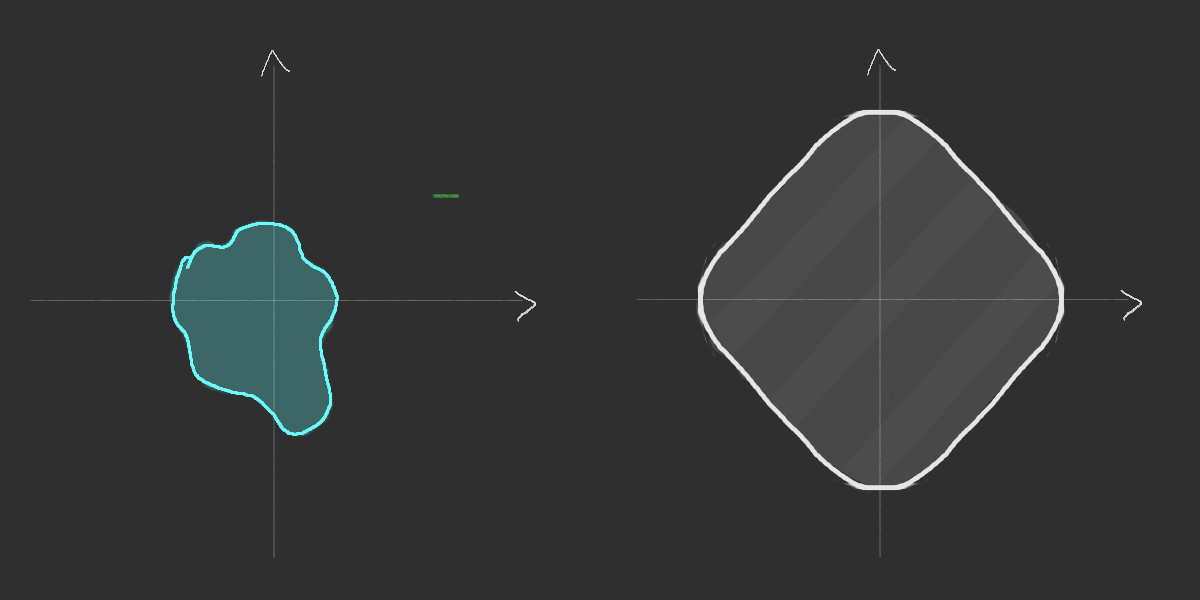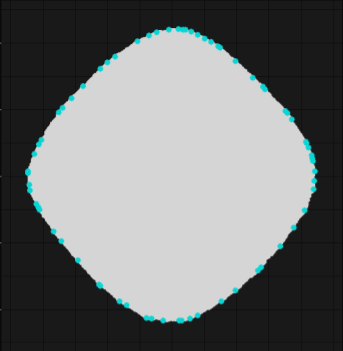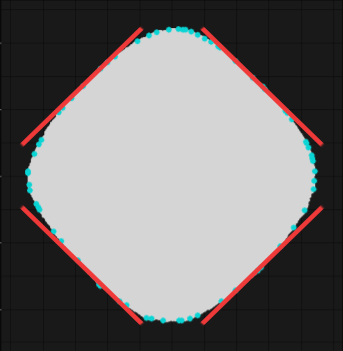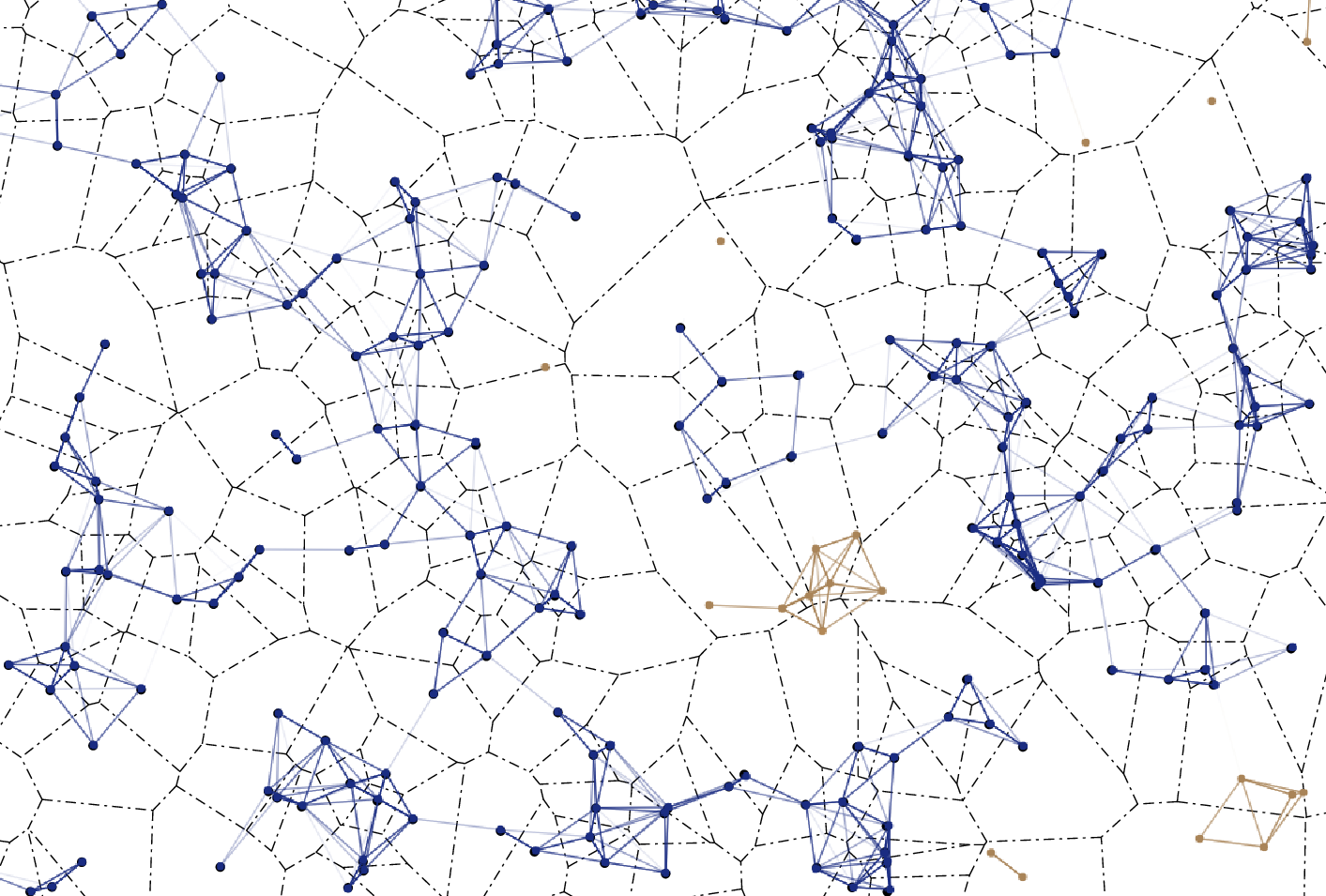Limiting shape for first-passage Percolation models
on random geometric graphs

Cristian F. Coletti (UFABC)
Overview
- Introduction to First-passage percolation (FPP)
- Random geometric graphs (RGG)
- First-passage percolation
- Asymptotic shape theorem
- Richardson model
Overview
19/19056-2
20/12868-9
17/10555-0
- Introduction to First-passage percolation (FPP)
- Random geometric graphs (RGG)
- First-passage percolation
- Asymptotic shape theorem
- Richardson model

Lucas R. de Lima (UFABC)
Joint work with
Daniel Valesin (Warwick)
Alexander Hinsen (WIAS - Berlin)
Benedikt Jahnel (WIAS - Berlin)
Supported by

What is it about?
first passage percolation on
- Introduced by Hammersley and Welsh in 1965 as a model for the spread of a fluid.
- Attach a nonnegative R.V. t(e) so that the (t(e) : e is and edge) is I.I.D.
- t(e) is interpreted as a passage time (or time needed to cross e).
- Define the shortest time to connect x to y by
The infimum is over all paths connecting x to y. Recall that a path is a finite sequence of vertices and edges
such that
FIRST-PASSAGE PERCOLATION

Time constant
It is of interest to study the asymptotic behavior of
Under some assumption on the distribution of t(e) we get
Time constant
Remark: This follows from the sub-additivity of the sequence
Idea: It follows from the translation invariance of the model that
Time constant
Fekete´s lemma and finite first moment of
guarantees that
exists and it is finite. Name this limit
Time constant
That
follows from Kingman´s - Liggett subadditive ergodic theorem applied to the sequence
Time constant
Remark: The time constant has been defined only for
Then extend the time constant to the whole space using
Remark: Kesten (1984) proved that we can use K-L theorem under the assumption
Time constant
where the R.V. in the minimum are i.i.d. copies of the passage time.
- Kesten (1984) proved that the time constant is a norm in the whole space if and only if
Then,
Time constant
- Cox-Durrett (1981) proved that if conditions
and
Time constant
FIRST-PASSAGE PERCOLATION

First-passage percolation

The model
Random geometric graph
The model
Remark:
The model
Existe
Voronoi partition
Voronoi partition

FIRST-PASSAGE PERCOLATION
We assign a random length
to each edge
Let
be independent and identically distributed with
FIRST-PASSAGE PERCOLATION
We define the passage time between by the random variable
FIRST-PASSAGE PERCOLATION
Let denote the random set of regions (Voronoi cells)
reached up to time t with the FPP starting from q(o).
Asymptotic shape theorem
Set
(A1)
(A2)
There exists
such that
Asymptotic shape theorem
Let
and
Then there exists
one has
such that, for all
for
. Consider i.i.d. FPP on a RGG
satisfying (A1) and (A2)
that
Sketch of the proof
- The passage time grows at most linearly
- The passage time grows at least linearly
- We apply Kingman`s subadditive ergodic theorem
Shape
- Consequence of the rotational invariance
At most linear growth
Condition (A1) implies that there exists such that
At Least linear growth
Condition (A2) implies that there exist such that
for each and all , one has that
Subadditive ergodic theorem
(Kingman)
Asymptotic equivalence
Existence of the limiting shape
Simulation of the Richardson's infection model

Richardson's growth model (1973)
RICHARDSON'S GROWTH MODEL
RICHARDSON'S GROWTH MODEL
RICHARDSON'S GROWTH MODEL
RICHARDSON'S GROWTH MODEL
Thank you!
Preprint available on
arxiv:2109.07813
Time-space rescaling for Richardson model
TIME-SPACE RESCALING FOR RICHARDSON MODEL
TIME-SPACE RESCALING FOR RICHARDSON MODEL
TIME-SPACE RESCALING FOR RICHARDSON MODEL
Remark:
Ongoing work
Lucas R. de Lima, D. Valesin, C. F. C.
João Pessoa 2022
By Cristian Coletti
João Pessoa 2022
- 238
